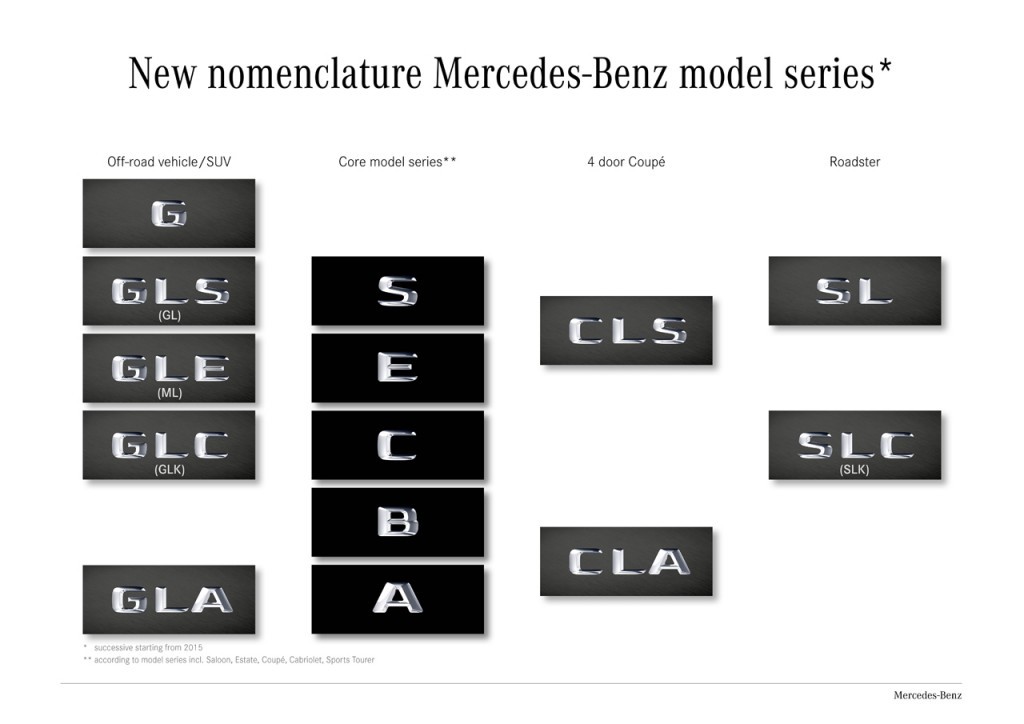Choosing the “best” Mercedes-Benz class isn’t about finding a single superior model; it’s about aligning your needs and desires with the diverse range of vehicles Mercedes-Benz offers. Each class is engineered with specific characteristics, making some better suited for certain lifestyles and preferences than others. Are you prioritizing performance, comfort, space, or fuel efficiency? The answer to “what Mercedes-Benz class is the best” is truly dependent on you.
To navigate this selection process effectively, let’s break down the Mercedes-Benz class system and highlight what each category offers. Understanding these distinctions is key to finding your perfect match within the Mercedes-Benz family.
You might recognize familiar names like the C-Class and S-Class sedans, cornerstones of the Mercedes-Benz lineup. However, you might also notice some shifts, like the absence of the M-Class and changes in the GL-Class designations. This is due to Mercedes-Benz refining its naming structure to better reflect the positioning and type of each vehicle.
The most significant updates involve the SUV and alternative fuel vehicle naming conventions. Sedan classes largely retain their established identities, while SUVs now incorporate a third letter to clearly indicate their sedan equivalent. For example, a GLS-Class SUV is designed to offer the spaciousness and luxury comparable to the S-Class sedan. Here’s a clearer breakdown of the SUV class nomenclature:
- GLA = GL A-Class: The entry-level SUV, offering a compact and agile driving experience, mirroring the A-Class.
- GLC = GL C-Class (previously GLK): A mid-size SUV, balancing luxury and practicality, aligned with the C-Class sedan.
- GLE = GL E-Class (previously M-Class or ML): A larger SUV, emphasizing comfort and advanced technology, reflecting the E-Class sedan.
- GLE Coupé = GL E-Class Coupé: A sporty SUV coupé version of the GLE, blending SUV practicality with coupé styling.
- GLS = GL S-Class (previously GL): The flagship SUV, providing ultimate luxury, space, and sophistication, the SUV equivalent of the S-Class.
- G-Class: Unchanged, remaining the iconic and rugged off-road SUV, known for its durability and distinctive design.
Beyond body styles, Mercedes-Benz is also streamlining the designations for alternative fuel powertrains. Previously, terms like “BlueTEC®” were used for diesel models. The new system simplifies this with single lowercase letters to denote different fuel types:
- c for “compressed natural gas”: Replacing “Natural Gas Drive.”
- d for “diesel”: Replacing “BlueTEC®” and “CDI.”
- e for “electric”: Encompassing “PLUG-IN HYBRID,” “BlueTEC® PLUG-IN HYBRID,” and “Electric Drive.”
- f for “fuel cell”: Replacing “F-CELL.”
- h for “hybrid”: Replacing “HYBRID” and “BlueTEC® HYBRID.”
Therefore, determining the “best” Mercedes-Benz class involves considering your specific requirements. How many passengers do you typically need to accommodate? Do you prefer the sleek profile of a sedan, the versatility of an SUV, or the open-air thrill of a roadster (like the SL-Class or SLC-Class, not explicitly mentioned in the original article but relevant to class discussion)? What type of fuel efficiency or powertrain aligns with your driving needs and environmental consciousness?
By answering these questions, you can begin to narrow down the Mercedes-Benz classes that best fit your lifestyle. Whether you prioritize luxurious comfort, dynamic performance, or practical space, Mercedes-Benz offers a class designed to meet your individual definition of “best.”
If you’re looking to explore the Mercedes-Benz range further and perhaps consider a pre-owned option, remember to explore reputable dealerships to find the Mercedes-Benz class that truly is the best for you.
